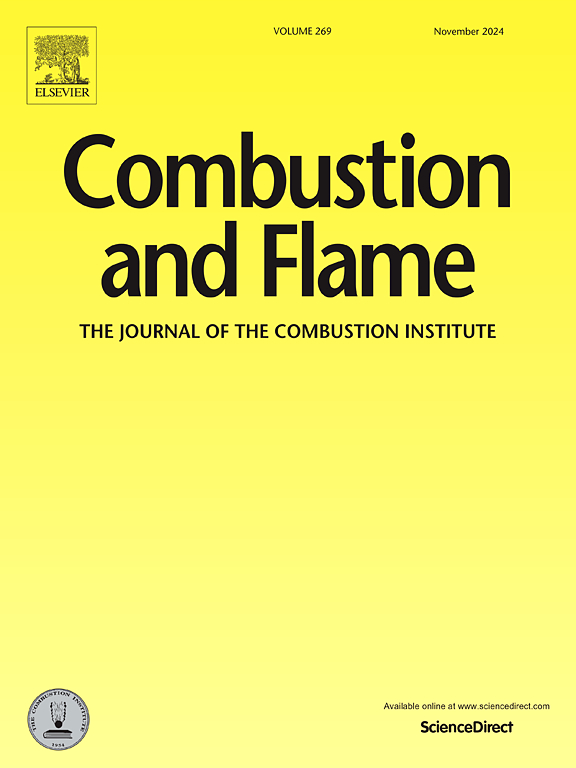Energy output characteristics of an enhanced aluminized explosive: Impact of Al-Li alloy fuel
IF 5.8
2区 工程技术
Q2 ENERGY & FUELS
引用次数: 0
Abstract
Applying new alloy fuels is critical for improving the energy release characteristics of aluminized explosives. Al-Li alloy fuel has become a promising fuel for metallized explosives due to its low ignition temperature, short ignition delay, and fast combustion rate. In this study, three different Al-Li alloy fuels (Li content 2 %, 5 %, and 10 %) were selected to replace pure Al particles, and their effect on oxidation, ignition, and combustion characteristics were examined. Thermogravimetric-differential scanning calorimetry revealed that using Al-Li alloy can cause early oxidation and increase the oxidation rate and weight gain, which is positively correlated with the Li content. Furthermore, the oxygen bomb calorimeter, closed bomb, and laser ignition measurements revealed that adding Li can promote the ignition and combustion of Al and increase its combustion calorific value. Among them, AlLi10 demonstrated the most balanced combination of high combustion calorific value, high combustion intensity, and short ignition delay. Additionally, aging experiments demonstrated that alloy fuels with more Li content are more easily oxidized, which makes it easy to react with HTPB and affects the safety of explosives. The designed HMX/AlLi2/HTPB explosive samples demonstrated improved detonation heat, detonation velocity, detonation field temperature, and near-field shock wave overpressure of the explosive when using Al-Li alloy fuel due to the ignition and combustion characteristics of Al-Li alloy fuel. Furthermore, the study explained the energy output structure of highly active alloy fuels in metalized explosive systems and proposed a micro-explosion refinement reaction model of Al-Li alloy fuel in the post-detonation combustion zone. The findings of this study may serve to develop AlLi2 alloy fuel as an attractive candidate for metalized explosives to enhance energy release.
求助全文
约1分钟内获得全文
求助全文
来源期刊

Combustion and Flame
工程技术-工程:化工
CiteScore
9.50
自引率
20.50%
发文量
631
审稿时长
3.8 months
期刊介绍:
The mission of the journal is to publish high quality work from experimental, theoretical, and computational investigations on the fundamentals of combustion phenomena and closely allied matters. While submissions in all pertinent areas are welcomed, past and recent focus of the journal has been on:
Development and validation of reaction kinetics, reduction of reaction mechanisms and modeling of combustion systems, including:
Conventional, alternative and surrogate fuels;
Pollutants;
Particulate and aerosol formation and abatement;
Heterogeneous processes.
Experimental, theoretical, and computational studies of laminar and turbulent combustion phenomena, including:
Premixed and non-premixed flames;
Ignition and extinction phenomena;
Flame propagation;
Flame structure;
Instabilities and swirl;
Flame spread;
Multi-phase reactants.
Advances in diagnostic and computational methods in combustion, including:
Measurement and simulation of scalar and vector properties;
Novel techniques;
State-of-the art applications.
Fundamental investigations of combustion technologies and systems, including:
Internal combustion engines;
Gas turbines;
Small- and large-scale stationary combustion and power generation;
Catalytic combustion;
Combustion synthesis;
Combustion under extreme conditions;
New concepts.
 求助内容:
求助内容: 应助结果提醒方式:
应助结果提醒方式:


